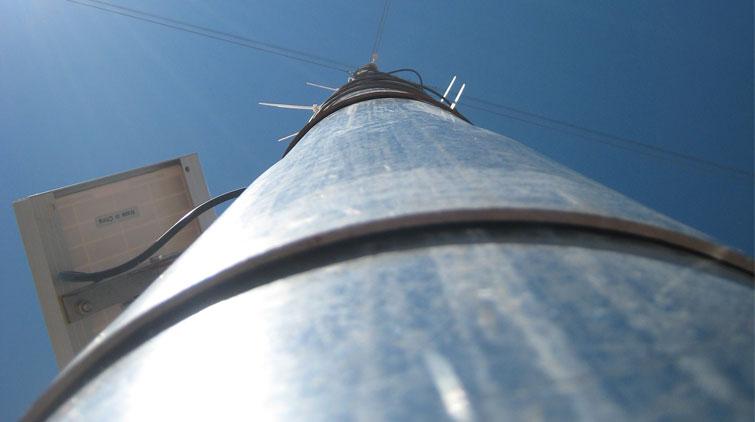Alternating Masts Change Location every 3-4 Months
Accredited as testing laboratory following ISO / IEC 17025:2005 for wind resource and energy yield assessments conform to ISO / IEC 61400-12-1, MEASNET and FGW standards
Mast alteration – a powerful tool generating more measurement data by imitating measurement masts
In cases of complex terrain, same as in cases where procurement expenses for several wind measurement systems shall be kept at a minimum, changing positions of measurement masts offers an appropriate solution to save costs by imitating measurement masts and reducing the costs for multiple wind measurement masts installed instead.
The principle relies on the same procedure as applied during site calibration in accordance to IEC 61400-12-1: if two the measurements at masts do correlate sufficiently, one mast can be removed and the derived from the remaining mast the time series at the removed mast can be extrapolated with vast certainty.
Alternating masts save costs by reducing the need for multiple wind measurement masts
During site calibration the behaviour of a wind measurement mast will be mimicked, based on comprehensive matrix calculations for different atmospheric situations of stability, classified by wind shear parameters. Advanced correlation and filtering procedures make possible the removal of one of the two masts. Though, validity of the measurement at both sites still is maintained by imitating the removed wind mast at its former position. This saves costs for example in the following cases:
- An old, or small, or not bankable measurement mast (M1) existing already on site that has an overlapping measurement period with a newly installed, bankable, higher mast for example.
The correlation between the old and the new mast enables backward extrapolation of the data measured at the new mast, modelling the history of the mast M2 for a period that this mast was not even installed. This procedure extends the measurement period of the new mast M2 towards the same period as the old mast M1 had been measuring in the past. This approach provides higher data security and hence lower overall uncertainty. Underlying correlation principles are similar as in case of a long-term correlation or if data gaps are filled.
- A mast is changing location (alternating mast), meant to measure for several months at several locations within the same objected area. This mast M1 is always correlated to a steady reference mast (M2) with a fixed position. Applying such an alternating mast M1 enables simulation of the wind measurement at M1 for the entire measurement period of the steady mast M2. For all sites where an alternating mast M1 had been taken measurements, the measurement period at M1 can be extrapolated to history and forward to cover the same measurement period as investigated with the reference mast M2.​This procedure reduces costs for more measurement masts and equipment, as the springing one may, within one year, imitate and hence substitute up to 4 steady masts.
This procedure reduces costs for more measurement masts and equipment, as the alternating mast M1 may, within one year, imitate and hence substitute up to 4 steady masts.
In general the procedure reduces the uncertainties linked to the wind database investigated for the objected area by increasing the measurement period for each single measurement point in combination with multiple measurement points.


 English
English العربية
العربية











